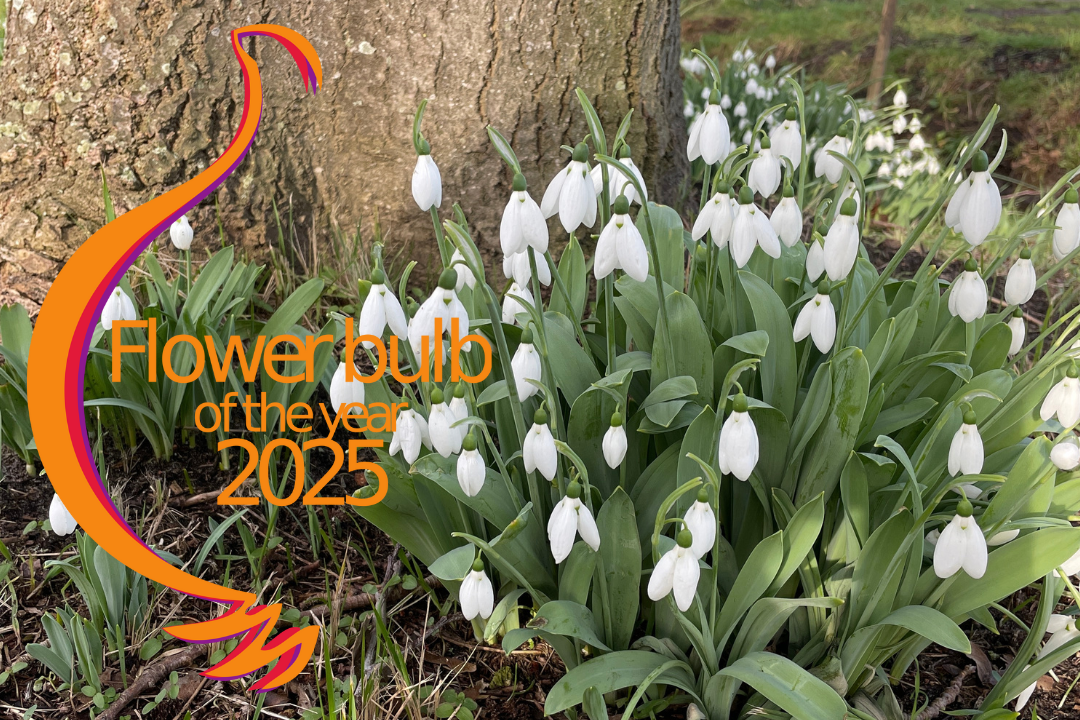SNOWDROPS: THE FIRST HARBINGERS OF SPRING
While winter is still in full swing, snowdrops (Galanthus) offer an early glimpse of spring. These hardy bulbs brave the cold and snow, blooming as early as January and February. With their delicate, white, bell-shaped flowers, they bring a touch of hope and freshness to the garden. This 'Flower bulb of the Year 2025' certainly deserves a podium.
A White World Full of Variety
Although we often associate snowdrops with their characteristic small white flowers, there are hundreds of varieties. They differ in size, petal shape, and even subtle color markings. A fascinating fact: snowdrop petals are actually colorless! Tiny air bubbles between the leaf cells reflect light, making them appear white. If you crush a petal, you’ll notice the residue is completely clear.
Planting Snowdrops
Want to grow snowdrops in your garden? Plant the bulbs immediately after purchase, from September to November. Remember: the sooner, the better! Snowdrops thrive in moist but well-draining, humus-rich soil. During their blooming period, they prefer sun, but in summer, they do best in partial shade—just like in their natural woodland habitat.
Great places to plant snowdrops include:
• Under deciduous trees or shrubs
• At the front of a border, combined with ground covers
• In grassy areas and rock gardens
• At the base of a deciduous hedge
Tip: Mice and squirrels love snowdrop bulbs. Protect them by placing chicken wire over the soil until the plants start to grow.
Caring for Snowdrops
Snowdrops require minimal maintenance. After planting, provide ample water and allow the foliage to die back naturally. This process helps the nutrients return to the bulb, ensuring healthy blooms the following year.
Pruning is unnecessary, but removing spent flowers can help direct energy back to the bulb. Every four years, it's beneficial to divide snowdrop clumps by lifting and separating them.
Propagating Snowdrops
Want to expand your snowdrop collection? Simply dig up clumps after they finish blooming, carefully divide them, and replant them immediately. Keep the roots intact and water well. The foliage may look slightly wilted after replanting, but the plants will recover fully by the next winter.
Choosing the Best Bulbs
In fall, select firm, large bulbs free of mold or damage. Larger bulbs produce stronger stems and bigger flowers. From December onward, you can also buy potted snowdrops to bring an early touch of spring indoors. Once they finish blooming, plant them in the garden for next year’s display.
Perfect Combinations
Snowdrops pair beautifully with other early bloomers, such as:
• Cyclamen coum
• Anemone blanda
• Crocus
• Scilla
• Helleborus
• Epimedium
They also thrive under hazelnut trees or witch hazels and look stunning in lawns alongside other naturalizing bulbs.
Popular Snowdrop Varieties
With over 700 cultivars available, there’s plenty to choose from. Here are some top recommendations we offer through our sales partners:
• Galanthus nivalis: The classic choice, perfect for mass planting.
• Galanthus elwesii: A larger variety, known as the "Giant Snowdrop."
• Galanthus nivalis ‘Flore Pleno’: A double-flowered variety, ideal for pots and small borders.
• Galanthus woronowii: Compact, with glossy green leaves and a distinctive green marking on the petals.
• Galanthus ‘S. Arnott’: Reliable and beautifully fragrant with a honey-like scent.
Bring Spring into Your Garden
Whether you're an experienced gardener or simply looking to add a touch of freshness to your outdoor space, snowdrops are a wonderful choice. They welcome spring in their own subtle yet enchanting way. Plant them, enjoy their beauty, and be amazed by their resilience!

